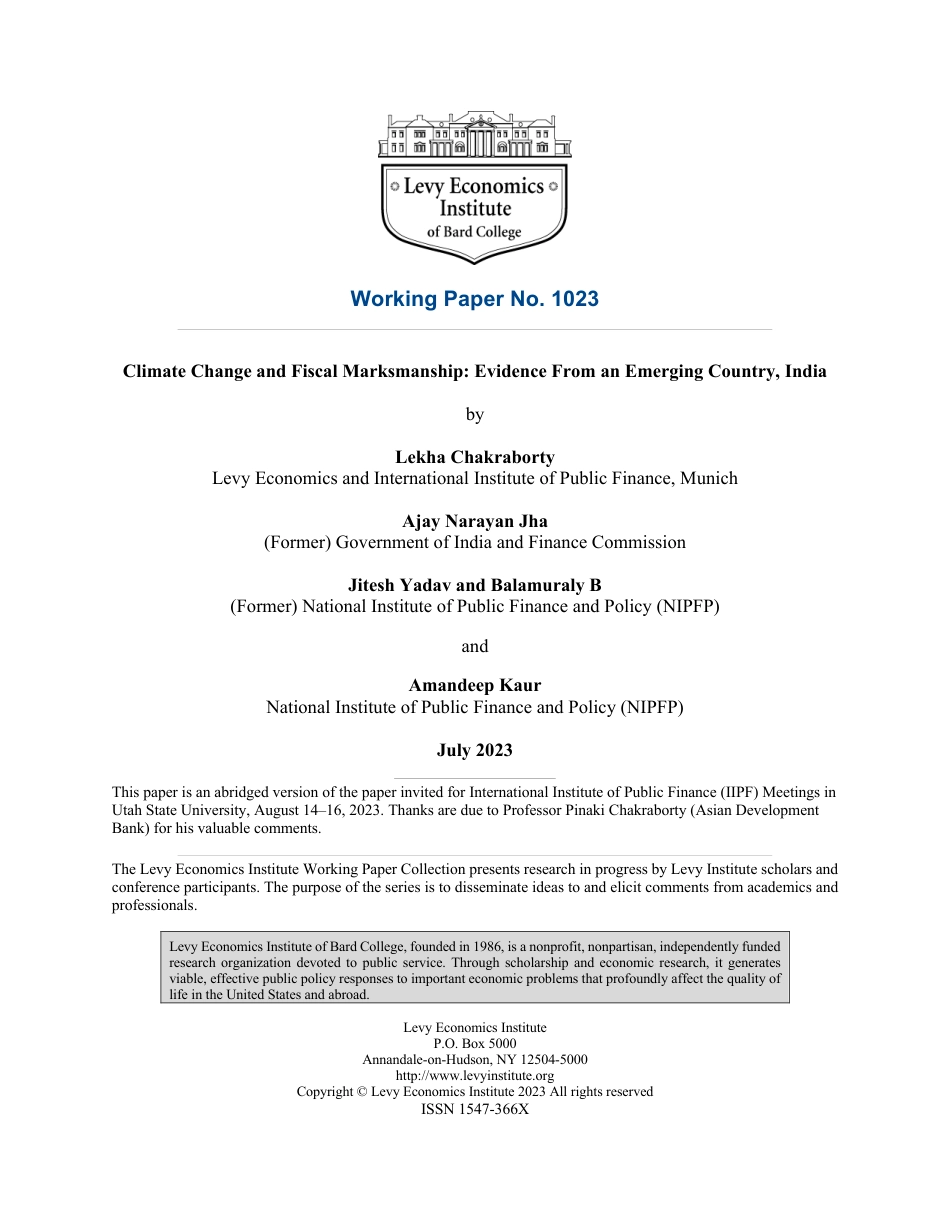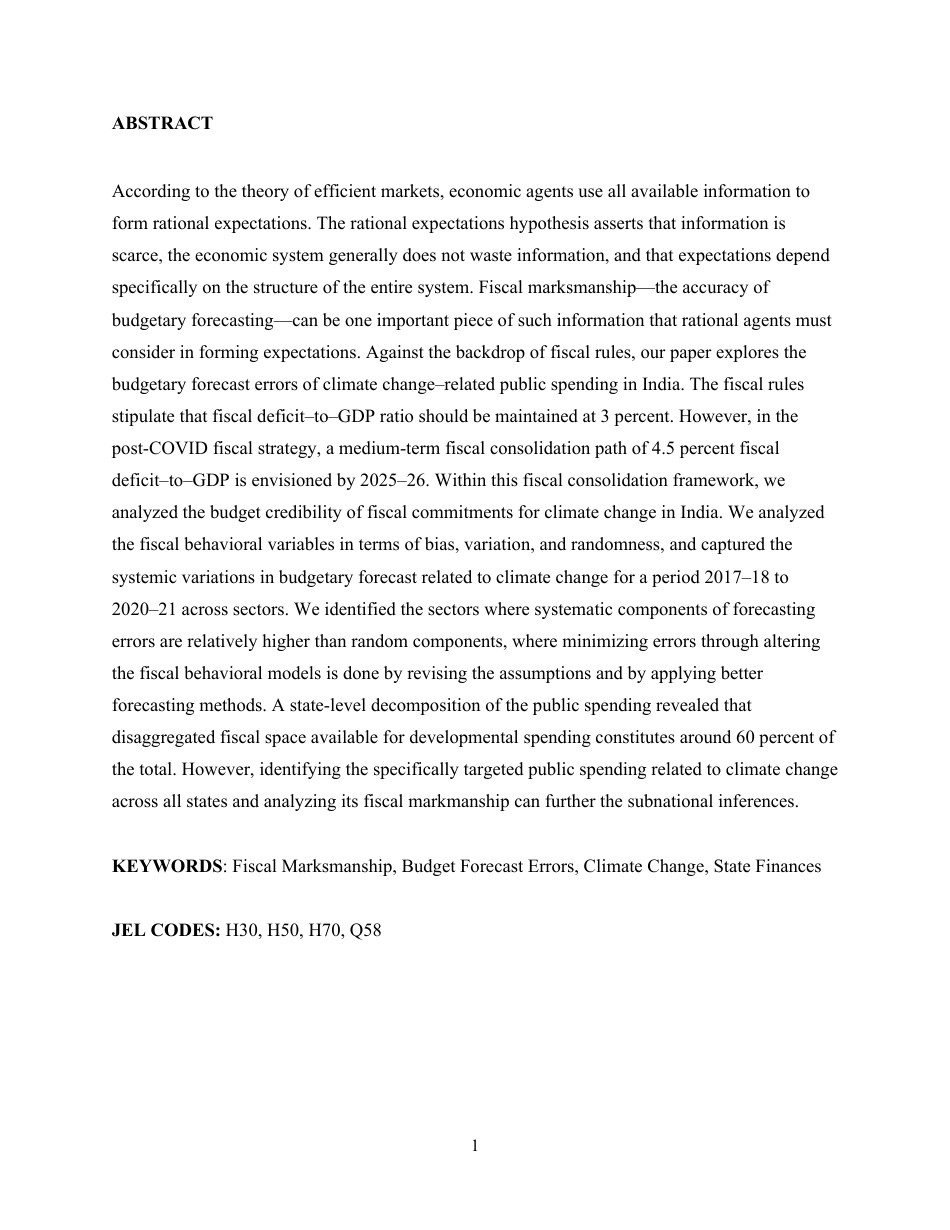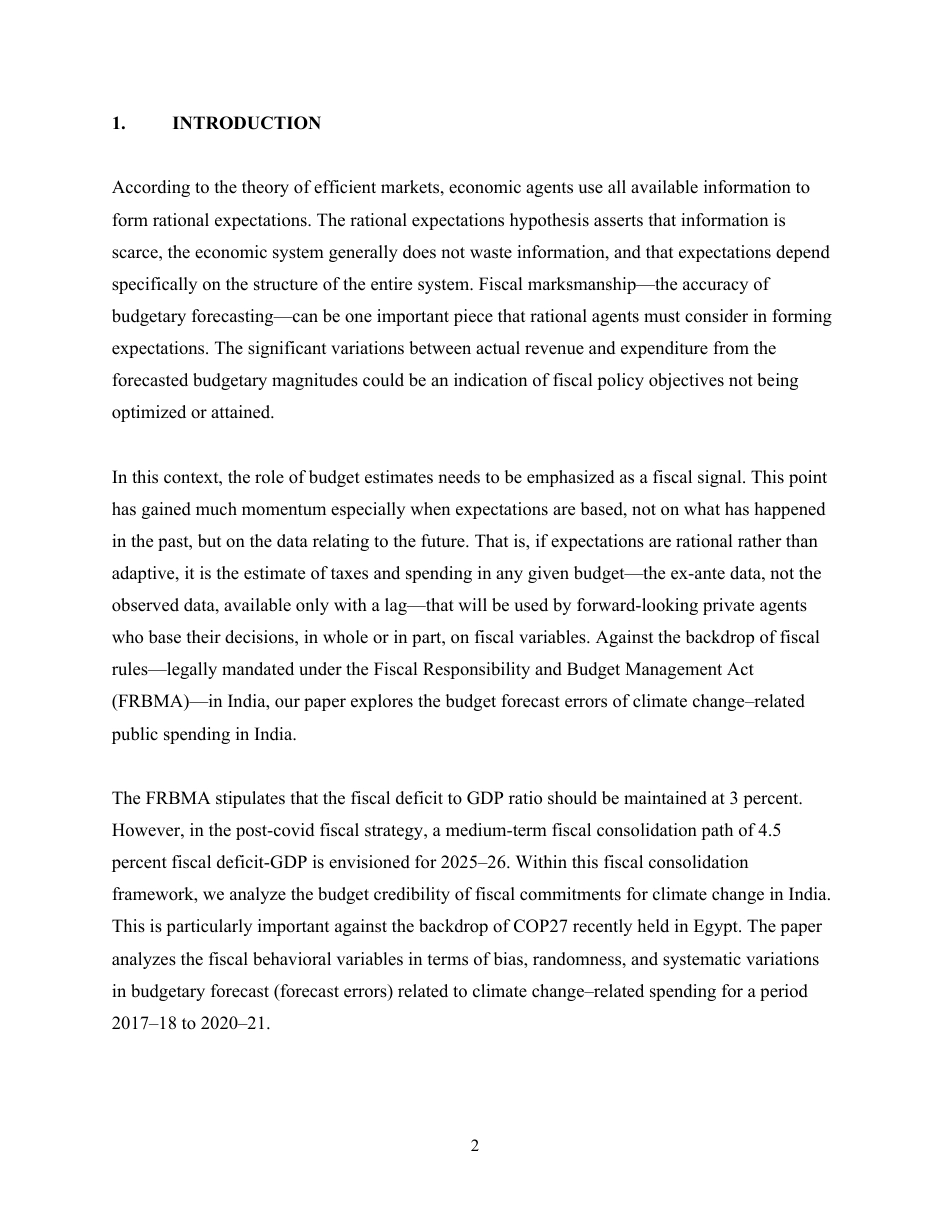Working Paper No. 1023 Climate Change and Fiscal Marksmanship: Evidence From an Emerging Country, India by Lekha Chakraborty Levy Economics and International Institute of Public Finance, Munich Ajay Narayan Jha (Former) Government of India and Finance Commission Jitesh Yadav and Balamuraly B (Former) National Institute of Public Finance and Policy (NIPFP) and Amandeep Kaur National Institute of Public Finance and Policy (NIPFP) July 2023 This paper is an abridged version of the paper invited for International Institute of Public Finance (IIPF) Meetings in Utah State University, August 14–16, 2023. Thanks are due to Professor Pinaki Chakraborty (Asian Development Bank) for his valuable comments. The Levy Economics Institute Working Paper Collection presents research in progress by Levy Institute scholars and conference participants. The purpose of the series is to disseminate ideas to and elicit comments from academics and professionals. Levy Economics Institute of Bard College, founded in 1986, is a nonprofit, nonpartisan, independently funded research organization devoted to public service. Through scholarship and economic research, it generates viable, effective public policy responses to important economic problems that profoundly affect the quality of life in the United States and abroad. Levy Economics Institute P.O. Box 5000 Annandale-on-Hudson, NY 12504-5000 http://www.levyinstitute.org Copyright © Levy Economics Institute 2023 All rights reserved ISSN 1547-366X 1 ABSTRACT According to the theory of efficient markets, economic agents use all available information to form rational expectations. The rational expectations hypothesis asserts that information is scarce, the economic system generally does not waste infor...



